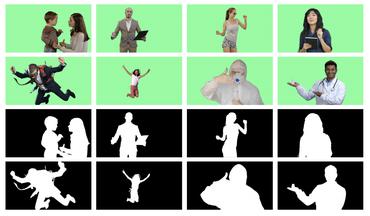Video Instance Matting
Conventional video matting outputs one alpha matte for all instances appearing in a video frame so that individual instances are not distinguished. While video instance segmentation provides time-consistent instance masks, results are unsatisfactory for matting applications, especially due to applied binarization. To remedy this deficiency, we propose Video Instance Matting~(VIM), that is, estimating alpha mattes of each instance at each frame of a video sequence. To tackle this challenging problem, we present MSG-VIM, a Mask Sequence Guided Video Instance Matting neural network, as a novel baseline model for VIM. MSG-VIM leverages a mixture of mask augmentations to make predictions robust to inaccurate and inconsistent mask guidance. It incorporates temporal mask and temporal feature guidance to improve the temporal consistency of alpha matte predictions. Furthermore, we build a new benchmark for VIM, called VIM50, which comprises 50 video clips with multiple human instances as foreground objects. To evaluate performances on the VIM task, we introduce a suitable metric called Video Instance-aware Matting Quality~(VIMQ). Our proposed model MSG-VIM sets a strong baseline on the VIM50 benchmark and outperforms existing methods by a large margin. The project is open-sourced at https://github.com/SHI-Labs/VIM.
PDF Abstract







 VideoMatte240K
VideoMatte240K